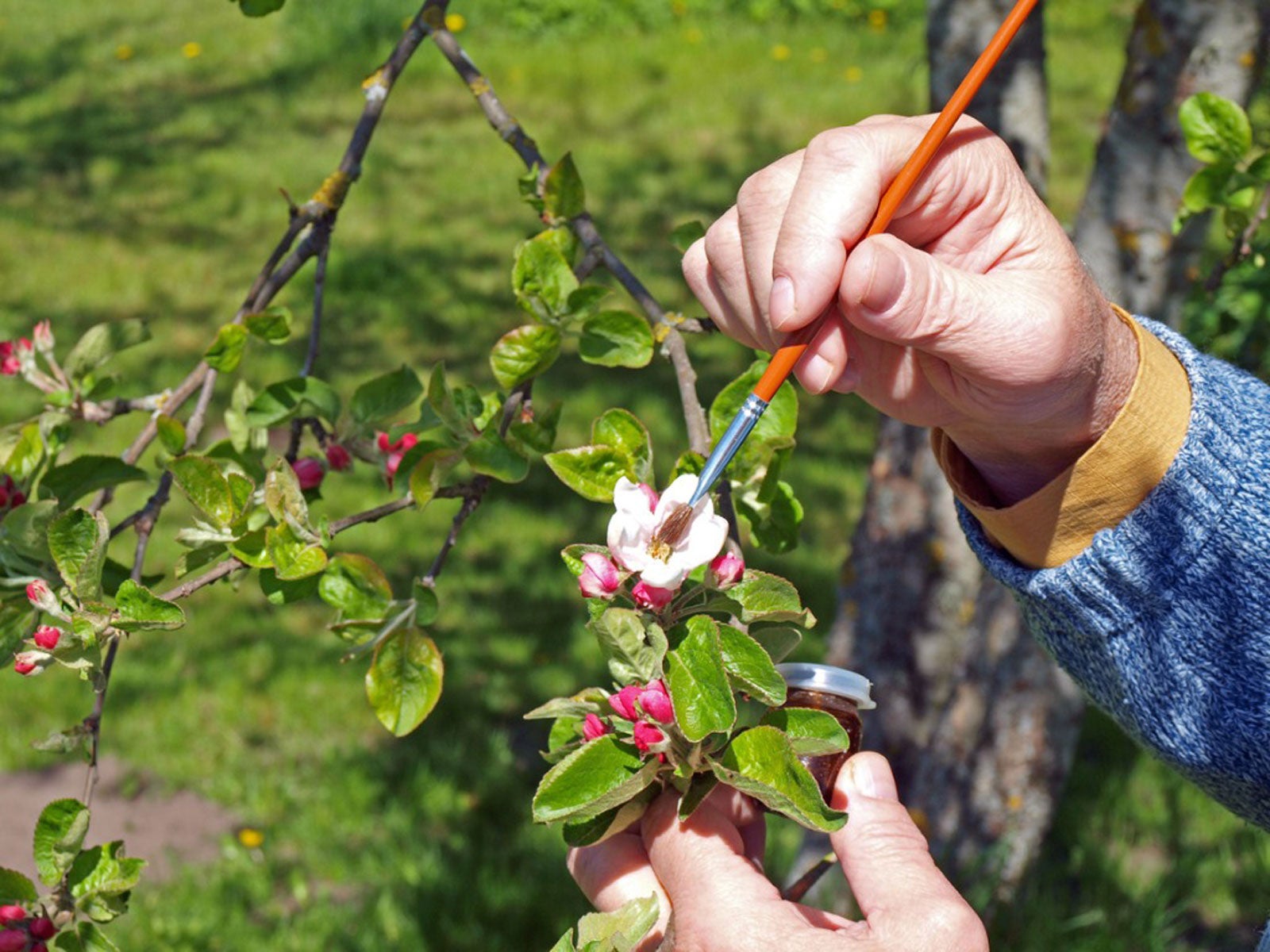Why Pollinate By Hand: What Is The Purpose Of Hand Pollination


Hand pollination techniques may be the answer to improving low crop yields in the garden. These simple skills are easy to learn and can benefit amateur as well as professional gardeners. As you gain experience, you might want to try your hand at creating a new hybrid variety of flower or vegetable. After all, plant breeders often pollinate by hand when maintaining pure plant specimens or in the creation of hybrid varieties.
What is Hand Pollination?
Hand pollination is the manual transfer of pollen from the stamen or male part of the flower to the pistil or female part. The purpose of hand pollination is to assist in the reproductive process of the plant. Hand pollination techniques depend upon the plant's sexuality as well as the reason for the process.
The simplest of the hand pollination techniques is simply to shake the plant. This method is effective for plants which produce hermaphrodite flowers. These self-fertile flowers contain both male and female parts. Examples of garden plants with hermaphrodite flowers include tomatoes, peppers, and eggplants.
A light breeze is usually sufficient to assist hermaphrodite flowers with the process of sexual reproduction. Growing these plants in a sheltered area, such as a walled garden, greenhouse, or indoors, can result in low fruit yields and create the need to pollinate by hand.
Hand Pollination Advantages
One of the primary hand pollination advantages is improved crop yields in spite of a reduction in the populations of pollinators. In recent times, bees have faced the increased spread of infection from parasites and disease. Pesticides and intensive farming practices have also taken their toll on many species of pollinating insects.
Crops which are affected by a drop in pollinator populations include corn, squash, pumpkins, and melons. These monecious plants produce both male and female flowers on the same plant, but each individual flower will contain either male or female parts.
For example, members of the cucurbit family produce male flowers first. These are typically borne in clusters on tall thin stems. The singular female flowers have a stem which resembles a small fruit. The primary purpose of hand pollination in cucurbits is to transport the pollen from the male to female flowers when bees aren't available to do the job.
Sign up for the Gardening Know How newsletter today and receive a free copy of our e-book "How to Grow Delicious Tomatoes".
To hand pollinate squash, pumpkins, melons, and cucumbers pluck the petals off the male flower, and use a small paintbrush or cotton swab to transfer the pollen to the pistil. The petal-less male flower can also be picked and used to swab the female flowers.
Hand-Pollination Techniques for Breeders
Since the purpose of hand pollination by breeders is the creation of hybrid varieties or the propagation of pure species, cross-contamination with undesirable pollen is of primary concern. In self-pollinating flowers, the corolla and stamen must often be removed.
Even with monecious and dioecious plants, care must be taken with the collection and distribution of pollen. Follow these steps to pollinate by hand and avoid cross-contamination:
- Use clean tools and hands.
- Collect ripe pollen from unopened flowers (If you must wait for flowers to open to collect ripe pollen, prevent insects and wind drift from contaminating the pollen).
- Store pollen in a cool place.
- Pollinate unopened flowers.
- After pollination, seal the pistil with surgical tape.

Laura Miller has been gardening all her life. Holding a degree in Biology, Nutrition, and Agriculture, Laura's area of expertise is vegetables, herbs, and all things edible. She lives in Ohio.